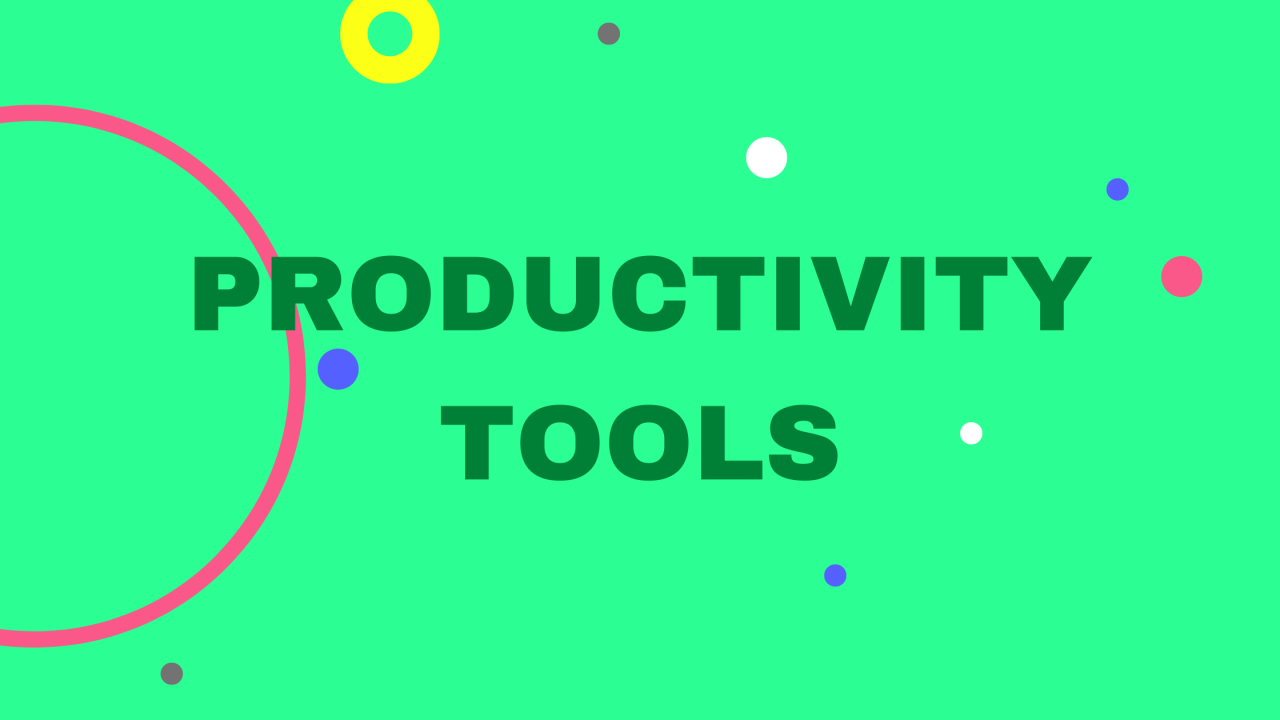In today’s fast-paced and digitally driven world, productivity software has become an integral part of our personal and professional lives. These tools help us streamline tasks, manage information, and collaborate effectively. With a plethora of options available, it can be overwhelming to choose the right productivity software for your needs. In this article, we’ll explore the top productivity tools, comparing their features and advantages to help you make an informed decision.
Microsoft Office 365
Microsoft Office 365, now known as Microsoft 365, has long been a dominant player in the productivity software arena. It includes a suite of applications such as Word, Excel, PowerPoint, and Outlook, which are essential for various tasks.
Advantages:
- Familiarity: Microsoft Office has been the standard for decades, making it a familiar and trusted choice for many users.
- Feature-Rich: It offers a wide range of features, making it suitable for everything from basic word processing to complex data analysis.
- Collaboration: Microsoft 365 integrates seamlessly with cloud-based OneDrive and SharePoint, facilitating real-time collaboration on documents.
- Security: Microsoft places a strong emphasis on security, offering robust data protection features.
Google Workspace
Google Workspace, formerly known as G Suite, is Google’s response to Microsoft’s dominance in the productivity software market. It includes Google Docs, Sheets, Slides, and Gmail, all cloud-based applications.
Advantages:
- Cloud-Based: Google Workspace is entirely cloud-based, making collaboration easy from anywhere with an internet connection.
- Real-Time Collaboration: Multiple users can collaborate on documents simultaneously, with changes saved in real time.
- Cost-Effective: It offers affordable plans, particularly for small businesses and educational institutions.
- Search Integration: Google’s powerful search capabilities are integrated into every application, making it easy to find what you need.
Apple iWork
Apple iWork is a suite of office applications designed specifically for Mac and iOS users. It includes Pages for word processing, Numbers for spreadsheets, and Keynote for presentations.
Advantages:
- Sleek Design: iWork applications are known for their elegant and user-friendly design, making them a favorite among Apple enthusiasts.
- Integration: Seamless integration with other Apple devices and services like iCloud.
- Collaboration: While not as robust as Google or Microsoft, iWork does offer collaboration features, allowing multiple users to work on documents.
- Free: iWork apps come free with every new Apple device, providing a cost-effective option for Apple users.
Slack
Slack is a messaging and collaboration platform that has gained immense popularity in recent years, particularly among remote teams.
Advantages:
- Communication: It streamlines communication by replacing email with channels, direct messages, and integrations with other apps.
- Integration: Slack can be integrated with a wide range of productivity tools, making it a central hub for work.
- Search and Archive: Messages and files are easy to search and archive, ensuring that important information is always accessible.
- Customization: Users can customize Slack with apps and bots to suit their specific workflow needs.
Trello
Trello is a project management and collaboration tool that uses boards, lists, and cards to help teams organize tasks and projects.
Advantages:
- Visual Workflow: Trello’s visual interface is intuitive and easy to use, making it accessible to users of all skill levels.
- Customization: Users can create custom boards and workflows to match their specific project requirements.
- Integration: Trello integrates with other tools like Google Drive, Slack, and more to streamline work processes.
- Free Plan: Trello offers a free plan with many features, making it attractive to small teams and individuals.
Comparing the Tools
Choosing the right productivity software depends on your specific needs and preferences. Here’s a brief comparison of these top tools:
- Microsoft 365 vs. Google Workspace: If you prefer desktop applications and need a robust feature set, Microsoft 365 is a strong choice. On the other hand, if you value collaboration and cloud-based access, Google Workspace might be more suitable.
- Apple iWork vs. Microsoft 365/Google Workspace: Apple users who appreciate an elegant design and seamless integration with their devices may prefer iWork. However, if you require cross-platform compatibility and collaboration features, Microsoft 365 or Google Workspace might be necessary.
- Slack vs. Trello: Slack excels in team communication and integration with other apps. Trello, on the other hand, is focused on project management and task organization. Your choice depends on your team’s primary needs.
In conclusion, the world of productivity software offers a diverse range of options, each catering to specific needs and preferences. Assess your requirements, consider your team’s workflow, and try out a few options to determine which tool aligns best with your productivity goals.

